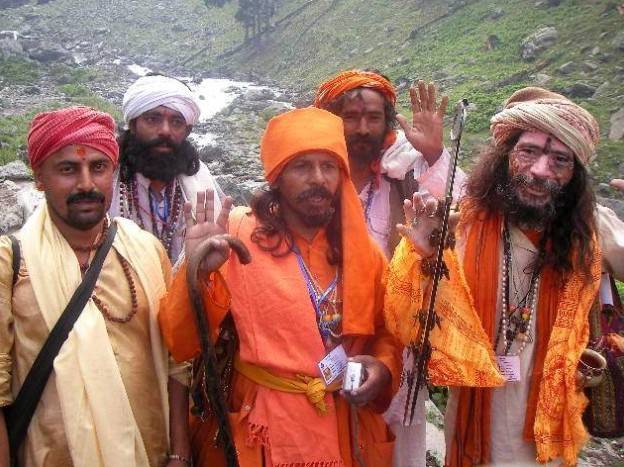August 2008
It takes three days to reach the Amarnath cave, following the well-worn route that winds from the tiny village of Chandanwari deep into the mountains of Indian Kashmir. Pilgrims come from every part of the subcontinent to undertake this Himalayan trek, walking in sandals or barefoot to worship the sacred Shiva-lingam, a stalagmite of ice that forms annually at the back of the cave – mysteriously swelling to a height of six feet before shrinking back into nothing. Hindus see this phallic growth as a manifestation of Lord Shiva, the god of creation and destruction, who chose the isolated cave to reveal the secret of eternity.
But now it seems this eternity – the miraculous regenerative process that has attracted the pilgrims for centuries – is threatened by the very people who come to worship it. For several years, the Shiva-lingam has melted unseasonally early. The pilgrims may explain this through their god’s will – ‘If Lord Shiva wants to stay with us, he stays. If not, he vanishes,’ says one man – but there is also a very simple physical explanation. It has become too warm in the cave. A combination of sheer body-heat – in recent years, pilgrim numbers have grown to nearly 500,000 – and a steadily-warming atmosphere is causing the ice to melt.
This isolated example of melting reflects a wider trend, just as the damage such numbers do to the delicate mountain ecosystem reflects the impact human populations are having around the globe. The snowcaps and glaciers of Kashmir, and Himalayan glaciers as a whole, are melting at the fastest rate in the world.
The route to the holy cave bears traces of previous human passage, from the stone shelters left by the Indian Army, whose job it is to safeguard the path, to the graffiti the soldiers scrawl on rocks to ease their monotonous watch. The plastic waste that litters the slopes is not cleared away when the pilgrims have gone, but left to be frozen in the ice, buried under rockslides and mud, until it forms a kind of sediment and becomes part of the landscape itself. At night the pilgrims sleep in guarded camps, bleak outposts of tents and prefabricated huts looming out of clouds and mist, and the sewage produced by these concentrations leaks down the slopes into streams and rivers, polluting the water system.
The increasing pollution is one of the reasons the government granted 100 acres of land to build better facilities this year – provoking furious protests from the valley’s Muslim majority, who saw it as a Hindu attempt to establish ownership of the region. The grant was revoked, which, in turn, led to violent protests from Hindu groups. The resulting strikes, riots and police shootings have exploded a decade of relative stability, reigniting bitter conflict in the valley. And as the communal uproar increases, the pollution continues unabated, and the Shiva-lingam melts. It’s a perfect example of how human conflict can distract from the much greater threat: the desecration of the environment on which we all, whether Muslim or Hindu, depend for our survival.
But what drives aged and infirm pilgrims to struggle, through drizzling rain and freezing wind, to a god that might already have disappeared? Why do they brave the threat of militant attacks, the overpowering army presence, and sleeping conditions that appear more like a refugee camp than a religious festival? Often the pilgrims are silent and withdrawn, their numbed feet slipping on frozen rocks, struggling through a bleak wilderness that only serves to emphasise their smallness. But occasionally, when the clouds open up to reveal the breathtaking beauty of the mountains, the sunlight briefly illuminating the startling hems of robes and saris, it’s possible to glimpse, for a moment, what keeps them trudging on. The sense of wonderment at what lies ahead – a natural phenomenon worshipped as a god – far outweighs their physical suffering.
In spite of the rubbish littering the slopes, the pilgrimage to Amarnath is a recognition of our original instinct to worship mountains, glaciers and rivers, an inherent awe of the natural forces that control and shape our lives. The melting stalagmite of ice should serve as a symbol of what we stand to lose, a sense of wonderment in danger of slipping away.


